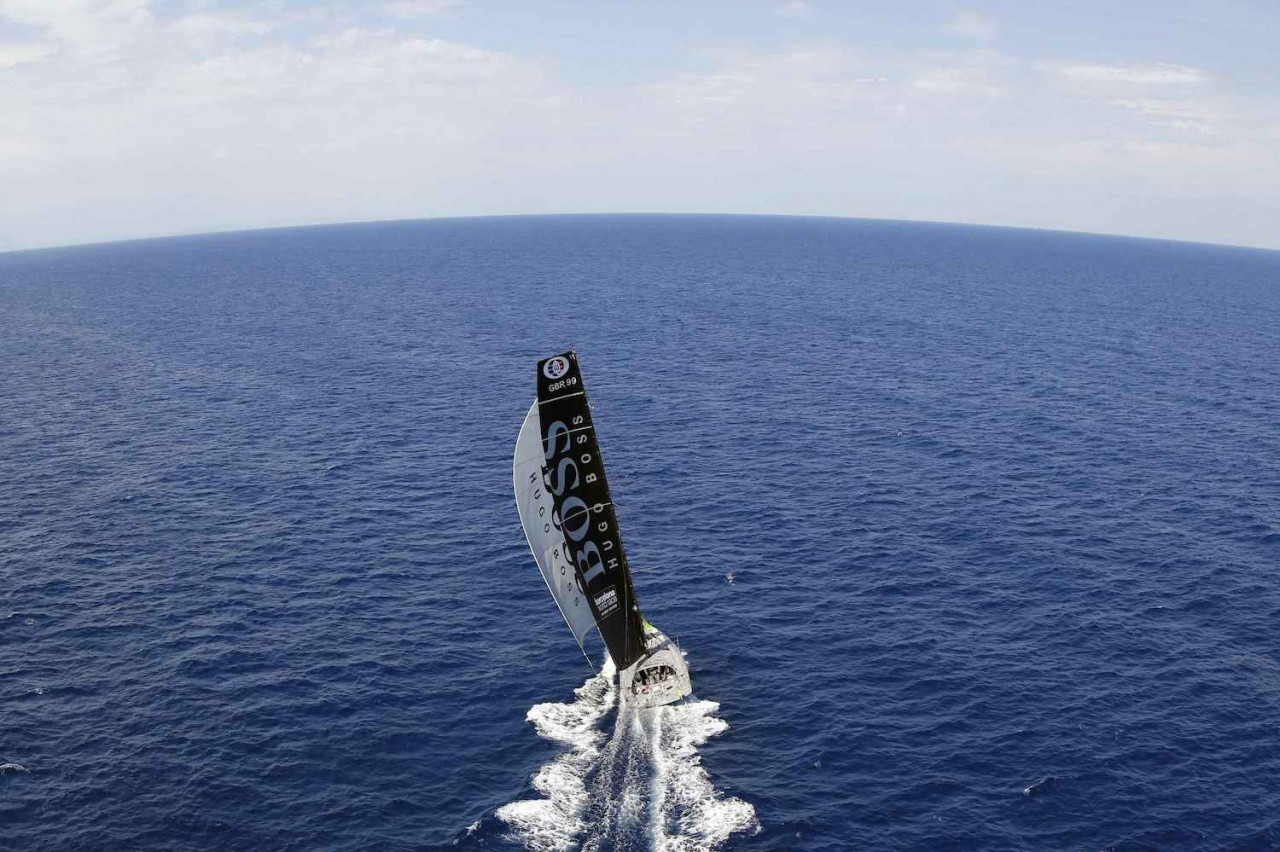Barcelona World Race: from one hemisphere to another

- Hierarchy respected after two weeks of racing
- A high level of competition, a well-matched fleet
- Initiatives favouring the environment and science
- Hugo Boss’ dismasting deprives the race of one of its favourites
The second major event of the IMOCA Ocean Masters championship, the Barcelona World Race has certainly fulfilled its promise in the two weeks since it set sail. Never before has the pace been so high and the fleet so evenly matched for this double-handed round the world race starting out from Barcelona. A sure sign of the increasingly professional preparation, until Hugo Boss’ dismasting on Wednesday 15 January there was no major damage to lament among the fleet despite what the sailors themselves refer to as the intense rhythm. On Alex Thomson and Pepe Ribes’ boat, it was one of the genoa furler pins that sheared, reminding us that offshore racing remains a mechanical sport. Even exemplary preparation, as was the case on Hugo Boss, cannot protect a crew from such vagaries.
Records tumbling
Making Barcelona – Gibraltar in 2d 05h 50mn (3d 07h 55mn in 2011) and Barcelona – Equator in 11d 13h 50mn (12d 10h 00mn in 2011), the new records were set by the same boat, Hugo Boss, ex Virbac-Paprec 3, and were gleaned by a respective time saving of 26 and 20 hours in relation to the reference times. Above all, the numbers are testimony to the crews’ commitment: at the equator, less than three hours separated those in the top trio. At this pace, the objectives of the leading crews to circumnavigate the globe in under 82 days could well be reached. The consequences of this first intense fortnight: all the sailors admit to a deep fatigue and will have to count on the tradewinds of the southern hemisphere to perk themselves up again before they take on the Roaring Forties.
Hierarchy respected
This first fortnight of racing hasn’t created any major surprises. The favourites have been where they should be. If we piece together the performance factors: age of boat, experience of the crew and preparation and training time, the current ranking couldn’t be more logical. Leading the way on Hugo Boss, Alex Thomson and Pepe Ribes boasted the most modern boat, a Verdier – VPLP design and winner of the last edition. The two men have quite a stock of knowledge of round the world racing and were able to get in a fair amount of training together in favourable conditions. Hot on their heels have been two experienced crews, Neutrogena, with Guillermo Altadill and José Muñoz and Cheminées Poujoulat, where the respective backgrounds of Jean Le Cam and Bernard Stamm make up for the short handover of the boat. Aboard GAES Centros Auditivos, Anna Corbella and Gerard Marin, authors of a fantastic start to the race, are demonstrating the benefits of intensive training to perfection.
The situation is more complex for the crew of Renault Captur, Sébastien Audigane and Jörg Riechers, who are only just finding their feet on the boat, and the same is true for Nandor Fa and Conrad Colman aboard Spirit of Hungary. Their experience should enable them to gradually up their game as the competition progresses. Finally, aboard We Are Water and One Planet One Ocean & Pharmaton, brothers Bruno and Willy Garcia, like Aleix Gelabert and Didac Costa, have set off on a journey of discovery around the world.
The dismasting of Alex Thomson and Pepe Ribes’ boat means that three IMOCAs from the same generation and the same architectural firm, Bruce Farr, are now pitted against each other. These three boats have been optimised over recent years: GAES competed in the Vendée Globe in the colours of Synerciel and underwent an extensive relook in the hands of Jean Le Cam, and it’s the same scenario for Neutrogena, which is none other than the boat on which Alex Thomson secured third place in the Vendée Globe. Finally, Cheminées Poujoulat, second in the last Barcelona World Race in the colours of MAPFRE, has had the hull beneath the waterline considerably modified with an increase in volume in the forward third of the boat so as to boost her power when reaching. It will be interesting to compare the performances of these three boats on a round the world with our current references.
An original format
The fleet’s imminent entry into the southern ocean in around a week’s time will be an opportunity to launch the scientific observation programmes for which the FNOB, in partnership with several European universities and research laboratories has requested the skippers’ participation. With UNESCO as patron, the programme will enable a unique set of data to be collected about the Deep South, a region which is set apart from the usual major shipping lanes. This new dimension, tested on a grand scale in the Barcelona World Race, is due to be part of the future programme for all the races that make up the IMOCA Ocean Masters championship. A way forward has been forged and it is down to the IMOCA class to make it work as an essential part of its philosophy.
Teams info
After a stunning 2025 season Sam Goodchild is the IMOCA Globe Series Champion for the second time
After a long season at the top of the IMOCA fleet that featured three race wins, Great Britain’s Sam Goodchild is for the second time in three years the IMOCA Globe Series Champion.
•••Quel rôle peut jouer la course au large dans la transformation du transport international ? Avec Pie…
Pour ce 10ᵉ épisode de Transitions, enregistré au Havre lors du départ de la Transat Café L'Or, nous recevons Jeremy Pochman, PDG de 11th Hour Racing, et Pierre-Antoine Morvan, responsable du pôle course au large et supe…
•••